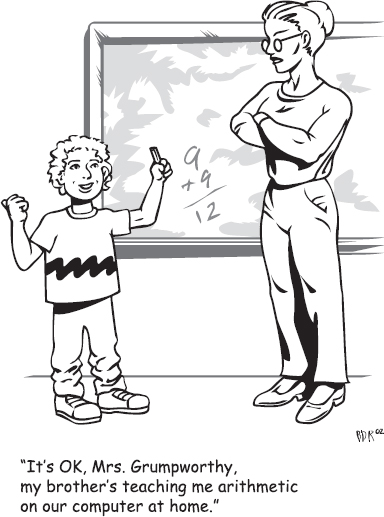CHAPTER 5
REPRESENTING NUMERICAL DATA

Thomas Sperling, adapted by Benjamin Reece
5.0 INTRODUCTION
As we have noted previously, the computer stores all data and program instructions in binary form, using only groups of zeros and ones. No special provision is made for the storage of the algebraic sign or decimal point that might be associated with a number; all responsibility for interpretation of those zeros and ones is left to the programmers whose programs store and manipulate those binary numbers. Thus, the binary numbers in a computer might represent characters, numbers, graphics images, video, audio, program instructions, or something else.
The ability of a computer to manipulate numbers of various kinds is, of course, of particular importance to users. In Chapter 4, we observed that nearly every high-level computing language provides a method for storage, manipulation, and calculation of signed integer and real numbers. This chapter discusses methods of representing and manipulating these numbers within the zeros-and-ones constraint of the computer.
We saw in Chapter 3 that unsigned integer numbers can be represented directly in binary form, and this provides a clue as to how we might represent the integer data type in the computer. There is a significant limitation, however: we have yet to show you a sign-free way of handling negative numbers that is compatible with the ...
Get The Architecture of Computer Hardware, Systems Software, & Networking: An Information Technology Approach, 5th Edition now with the O’Reilly learning platform.
O’Reilly members experience books, live events, courses curated by job role, and more from O’Reilly and nearly 200 top publishers.

